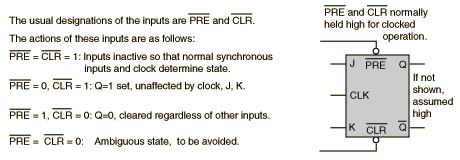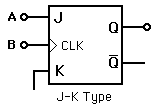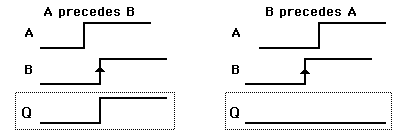Asynchronous Inputs to Flip-Flops
The ordinary data transfer uses of flip-flops make use of inputs which are called "control" or "synchronous" inputs. Most often, the output changes from the flip-flops occur when data is applied to these inputs synchronously with a clock pulse. There is another set of inputs called the asynchronous set and clear inputs which will change the state of the flip-flop regardless of what is going on at the other inputs - they are override inputs which can force a given state onto the flip-flop. They are used in asynchronous data transfer.

| Flip-Flops |
Electronics concepts
Digital circuits
Data Transfer
J-K Flip-Flop Applications
Reference
Tocci
Digital Systems, Sec 5-9
| HyperPhysics*****Electricity and magnetism | R Nave |

